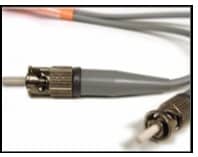| Answers Explanation & Hints:
A benefit of analyzing data in motion rather than a static data set is that critical decisions can be made more quickly.
Analyzing data in motion refers to analyzing data as it is generated or received, rather than analyzing a static data set that has already been collected. Analyzing data in motion allows for real-time insights and decision-making, which is important in many industries where time is of the essence, such as finance, healthcare, and manufacturing.
In contrast, analyzing a static data set requires the data to be collected, processed, and then analyzed, which can take time and delay decision-making. Analyzing data in motion allows for quicker response times and more immediate action, which can be critical in situations where decisions need to be made quickly.
While analyzing data in motion can provide real-time insights, it is important to note that it may not always be more accurate than analyzing a static data set. In fact, analyzing data in motion can sometimes be less accurate due to issues such as data quality, data integrity, and data latency. The accuracy of the data depends on the quality and reliability of the data sources, as well as the algorithms used to analyze the data. |
